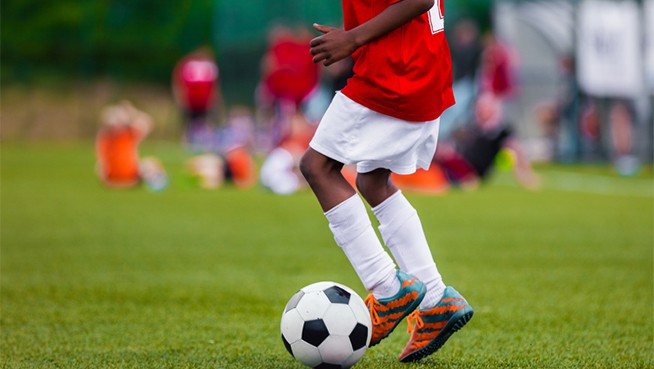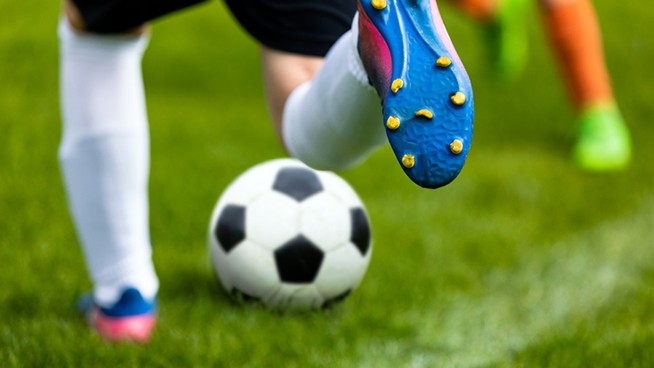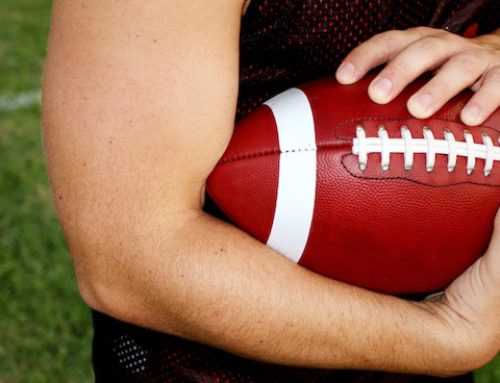Fastpitch Hitting Drills for Beginners
There are many hitting drills out there. Some are great, some are not so great. I have put together a guide to fastpitch softball hitting drills along with tips to make sure you have a solid swing.
Grip
You want to place the bat in your fingertips, or as players are commonly taught: “line up your door-knocking knuckles.” This is the first step to creating a great swing. Placing the bat in the fingertips allows for maximum wrist snap to generate the most bat speed. Placing the bat in the mid-palm locks the wrist in place and causes you to twist your shoulders more, decreasing bat control.
RELATED: Softball Bottom-Hand Hitting Drill
Bat Position and Stance
You want to use the standard athletic stance for your batting stance—feet slightly wider than shoulder-width apart, knees and hips flexed and weight on your toes. You may turn your toes slightly inward for better balance.
Your hands should begin between your shoulder and your ear with the knob of the bat pointing at the opposite batter’s box. This creates the ideal bat angle and places the bat at the quickest path to the ball. Once your hands are set, they remain at station, meaning they maintain their position with minimal movement until after you stride and your hands are ready to attack the ball.
RELATED: “Squash the Bug” and Other Softball Batting Tips That Don’t Work
Load and Stride
This phase of the swing is crucial for timing the pitch. The load is a slight weight shift onto your back leg. To know if you have loaded correctly, you should feel the inside of your thigh flex. While keeping the inner part of your back leg flexed, stride with your front leg without transferring weight.
The stride can happen one of three ways:
- Pick your foot up and replant it in the same starting position.
- Raise only your heel while your toe remains in contact with the ground.
- Replant your front foot 4 to 6 inches (about the width of your shoe).
Whichever method you prefer, your stride foot must be down by the time the pitcher plants her stride leg. Balance is extremely important for batters to allow their eyes to track the ball easier. Being off-balance makes batters more vulnerable to off-speed pitches and makes it more difficult to protect themselves from wild pitches.
RELATED: Hitting Tips from Arizona State Softball
To review the above fundamentals, view this video on basic hitting technique.
Contact Position and Using Your Lower Half
Good contact position allows you to hit with maximum power. When the ball and bat meet, you need to be in a strong position, ready to drive the ball. Your back knee should be rotated directly under your hip, with your shoulder and elbow in line with your hip. Your back hand should be palm up, your top hand palm down, your chin tucked and both eyes squared on contact. Your hands need to be above the ball to create better backspin. Your front side should be strong and should not change throughout the swing.
The goal is to make contact with the top third of the ball. Your hands move down and through the ball, driving it for distance, not height.
Use this drill to work on contact position and using your lower half to hit with power.
Bat Path
The best way to create good bat path is to keep the knob of the bat pointed towards the opposite batter’s box. This keeps your hands in the ideal position to attack. During the attack, your hands should move in a straight line back toward the pitcher.
Use this drill to learn how to take your hands to the ball correctly.
Finish
For your follow-through, point the end of the bat at the pitcher and keep your head still. If this is difficult, go back and make sure your hands are starting correctly (knob pointed at opposite batter’s box.) The finish should be directed toward the center of the field.
RELATED: How Alabama Softball Builds Bat Speed and Hand Coordination
Line Drive Tee Drill
This simple but effective drill reinforces proper mechanics and technique. Drills with specific results help players learn how to correct themselves easier. Place a target 15 to 20 feet directly in front of the tee and practice hitting line drives at the target. View Line Drive Tee Drill.
RECOMMENDED FOR YOU
MOST POPULAR
Fastpitch Hitting Drills for Beginners
There are many hitting drills out there. Some are great, some are not so great. I have put together a guide to fastpitch softball hitting drills along with tips to make sure you have a solid swing.
Grip
You want to place the bat in your fingertips, or as players are commonly taught: “line up your door-knocking knuckles.” This is the first step to creating a great swing. Placing the bat in the fingertips allows for maximum wrist snap to generate the most bat speed. Placing the bat in the mid-palm locks the wrist in place and causes you to twist your shoulders more, decreasing bat control.
RELATED: Softball Bottom-Hand Hitting Drill
Bat Position and Stance
You want to use the standard athletic stance for your batting stance—feet slightly wider than shoulder-width apart, knees and hips flexed and weight on your toes. You may turn your toes slightly inward for better balance.
Your hands should begin between your shoulder and your ear with the knob of the bat pointing at the opposite batter’s box. This creates the ideal bat angle and places the bat at the quickest path to the ball. Once your hands are set, they remain at station, meaning they maintain their position with minimal movement until after you stride and your hands are ready to attack the ball.
RELATED: “Squash the Bug” and Other Softball Batting Tips That Don’t Work
Load and Stride
This phase of the swing is crucial for timing the pitch. The load is a slight weight shift onto your back leg. To know if you have loaded correctly, you should feel the inside of your thigh flex. While keeping the inner part of your back leg flexed, stride with your front leg without transferring weight.
The stride can happen one of three ways:
- Pick your foot up and replant it in the same starting position.
- Raise only your heel while your toe remains in contact with the ground.
- Replant your front foot 4 to 6 inches (about the width of your shoe).
Whichever method you prefer, your stride foot must be down by the time the pitcher plants her stride leg. Balance is extremely important for batters to allow their eyes to track the ball easier. Being off-balance makes batters more vulnerable to off-speed pitches and makes it more difficult to protect themselves from wild pitches.
RELATED: Hitting Tips from Arizona State Softball
To review the above fundamentals, view this video on basic hitting technique.
Contact Position and Using Your Lower Half
Good contact position allows you to hit with maximum power. When the ball and bat meet, you need to be in a strong position, ready to drive the ball. Your back knee should be rotated directly under your hip, with your shoulder and elbow in line with your hip. Your back hand should be palm up, your top hand palm down, your chin tucked and both eyes squared on contact. Your hands need to be above the ball to create better backspin. Your front side should be strong and should not change throughout the swing.
The goal is to make contact with the top third of the ball. Your hands move down and through the ball, driving it for distance, not height.
Use this drill to work on contact position and using your lower half to hit with power.
Bat Path
The best way to create good bat path is to keep the knob of the bat pointed towards the opposite batter’s box. This keeps your hands in the ideal position to attack. During the attack, your hands should move in a straight line back toward the pitcher.
Use this drill to learn how to take your hands to the ball correctly.
Finish
For your follow-through, point the end of the bat at the pitcher and keep your head still. If this is difficult, go back and make sure your hands are starting correctly (knob pointed at opposite batter’s box.) The finish should be directed toward the center of the field.
RELATED: How Alabama Softball Builds Bat Speed and Hand Coordination
Line Drive Tee Drill
This simple but effective drill reinforces proper mechanics and technique. Drills with specific results help players learn how to correct themselves easier. Place a target 15 to 20 feet directly in front of the tee and practice hitting line drives at the target. View Line Drive Tee Drill.
[cf]skyword_tracking_tag[/cf]









